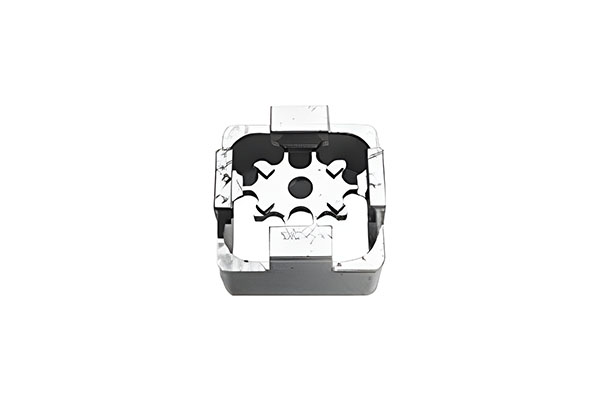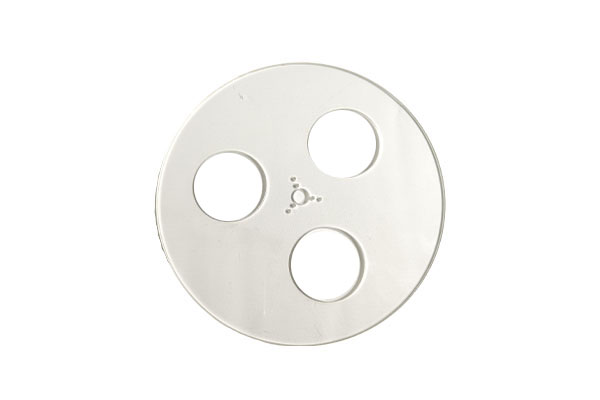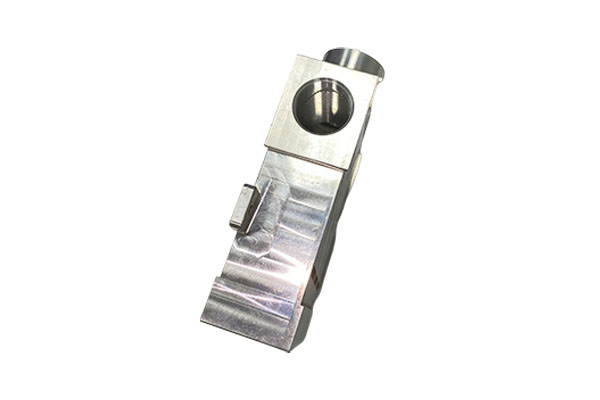How can wire cutting parts processing improve the manufacturing efficiency of microstructured parts?
Release Time : 2025-08-11
With the growing demand for high-precision, complex-shaped parts in modern manufacturing, traditional machining methods are increasingly unable to meet these requirements. As a precision machining method, wire cutting parts processing offers unique advantages in the manufacturing of microstructured parts. This is particularly true in the laser equipment, new energy photovoltaic equipment, solar equipment, lithium battery equipment, semiconductor equipment, 3C bonding equipment, die-cutting equipment, coating equipment, testing equipment, medical equipment, medical automation, aviation manufacturing, manufacturing, robotics, and various intelligent equipment industries. Its application not only improves production efficiency but also ensures high product quality and consistency.
1. Selecting the Right Wire
In wire cutting, selecting the right wire is a key factor in improving the manufacturing efficiency of microstructured parts. For microstructured parts, smaller diameter, higher strength molybdenum or tungsten wire is generally required. These materials offer excellent conductivity and wear resistance, and can withstand high-frequency pulsed currents, resulting in more precise cutting results. Furthermore, selecting wire suitable for a specific material can significantly reduce wire breakage and improve the stability of continuous production.
2. Optimizing Pulse Power Supply Parameters
The pulse power supply is a core component of wire-cut EDM machines, and its parameter settings directly impact cutting speed and processing quality. To improve manufacturing efficiency for fine-structured parts, key parameters such as pulse width and peak current must be appropriately adjusted based on the specific material properties and process requirements. In the laser equipment industry, certain optical components require extremely precise contour cutting. In these cases, reducing the pulse width and increasing the frequency can help concentrate the energy of each discharge, thereby reducing the heat-affected zone and improving cutting accuracy. In the manufacturing of new energy photovoltaic equipment, when dealing with large and thick silicon wafers, the peak current must be appropriately increased to increase cutting speed without damaging the workpiece surface.
3. Multi-Axis Control Technology
With the widespread adoption of Industry 4.0, intelligent production lines are becoming a future trend. In the wire-cut EDM industry, the application of multi-axis control technology enables efficient processing of complex geometric parts. Advanced CNC systems enable simultaneous motion in the X, Y, and Z axes, as well as the U and V axes, greatly expanding processing range and flexibility. In the aviation manufacturing industry, components such as engine blades often feature complex curved surfaces, making traditional 2D wire EDM difficult to achieve. However, a wire EDM machine with five-axis linkage can automatically generate the optimal path based on the 3D model, completing precision cutting of all parts in one go, eliminating the need for multiple clamping and positioning steps and significantly shortening the processing cycle. Similarly, in the robotics and intelligent equipment industries, multi-axis linkage control plays a crucial role in the production of special-shaped brackets or connectors.
4. Introducing CAD/CAM Software
Modern wire EDM relies on powerful CAD/CAM software. By importing design drawings into CAM software, detailed machining programs can be quickly generated and simulated to identify potential problems before they occur. This not only improves programming efficiency but also effectively avoids operational errors. In the medical device and medical automation sectors, many implantable devices and diagnostic instruments require micron-level precision. Using CAD/CAM software, engineers can repeatedly test different design options in a virtual environment until they find the optimal solution. This saves time and costs while ensuring the reliability of the final product.
5. Strengthen Process Monitoring and Maintenance
Regular maintenance is crucial to keep wire-cutting equipment in top condition. Online monitoring systems can provide real-time visibility into equipment operating conditions, providing timely warnings of potential problems and preventing unplanned downtime. The harsh environmental conditions of lithium battery manufacturing can easily lead to wire-cutting equipment failures. Therefore, installing temperature and humidity sensors, combined with a remote monitoring platform, enables 24/7 unattended automated management. Upon detecting an abnormality, the system immediately notifies relevant personnel to take corrective action, ensuring continuous production.
In short, through the appropriate selection of wire materials, optimized pulse power supply parameters, the use of multi-axis linkage control technology, CAD/CAM software-assisted design, and enhanced process monitoring and maintenance, wire cutting parts processing can significantly improve the manufacturing efficiency of microstructured parts in a variety of high-end manufacturing fields.
1. Selecting the Right Wire
In wire cutting, selecting the right wire is a key factor in improving the manufacturing efficiency of microstructured parts. For microstructured parts, smaller diameter, higher strength molybdenum or tungsten wire is generally required. These materials offer excellent conductivity and wear resistance, and can withstand high-frequency pulsed currents, resulting in more precise cutting results. Furthermore, selecting wire suitable for a specific material can significantly reduce wire breakage and improve the stability of continuous production.
2. Optimizing Pulse Power Supply Parameters
The pulse power supply is a core component of wire-cut EDM machines, and its parameter settings directly impact cutting speed and processing quality. To improve manufacturing efficiency for fine-structured parts, key parameters such as pulse width and peak current must be appropriately adjusted based on the specific material properties and process requirements. In the laser equipment industry, certain optical components require extremely precise contour cutting. In these cases, reducing the pulse width and increasing the frequency can help concentrate the energy of each discharge, thereby reducing the heat-affected zone and improving cutting accuracy. In the manufacturing of new energy photovoltaic equipment, when dealing with large and thick silicon wafers, the peak current must be appropriately increased to increase cutting speed without damaging the workpiece surface.
3. Multi-Axis Control Technology
With the widespread adoption of Industry 4.0, intelligent production lines are becoming a future trend. In the wire-cut EDM industry, the application of multi-axis control technology enables efficient processing of complex geometric parts. Advanced CNC systems enable simultaneous motion in the X, Y, and Z axes, as well as the U and V axes, greatly expanding processing range and flexibility. In the aviation manufacturing industry, components such as engine blades often feature complex curved surfaces, making traditional 2D wire EDM difficult to achieve. However, a wire EDM machine with five-axis linkage can automatically generate the optimal path based on the 3D model, completing precision cutting of all parts in one go, eliminating the need for multiple clamping and positioning steps and significantly shortening the processing cycle. Similarly, in the robotics and intelligent equipment industries, multi-axis linkage control plays a crucial role in the production of special-shaped brackets or connectors.
4. Introducing CAD/CAM Software
Modern wire EDM relies on powerful CAD/CAM software. By importing design drawings into CAM software, detailed machining programs can be quickly generated and simulated to identify potential problems before they occur. This not only improves programming efficiency but also effectively avoids operational errors. In the medical device and medical automation sectors, many implantable devices and diagnostic instruments require micron-level precision. Using CAD/CAM software, engineers can repeatedly test different design options in a virtual environment until they find the optimal solution. This saves time and costs while ensuring the reliability of the final product.
5. Strengthen Process Monitoring and Maintenance
Regular maintenance is crucial to keep wire-cutting equipment in top condition. Online monitoring systems can provide real-time visibility into equipment operating conditions, providing timely warnings of potential problems and preventing unplanned downtime. The harsh environmental conditions of lithium battery manufacturing can easily lead to wire-cutting equipment failures. Therefore, installing temperature and humidity sensors, combined with a remote monitoring platform, enables 24/7 unattended automated management. Upon detecting an abnormality, the system immediately notifies relevant personnel to take corrective action, ensuring continuous production.
In short, through the appropriate selection of wire materials, optimized pulse power supply parameters, the use of multi-axis linkage control technology, CAD/CAM software-assisted design, and enhanced process monitoring and maintenance, wire cutting parts processing can significantly improve the manufacturing efficiency of microstructured parts in a variety of high-end manufacturing fields.







